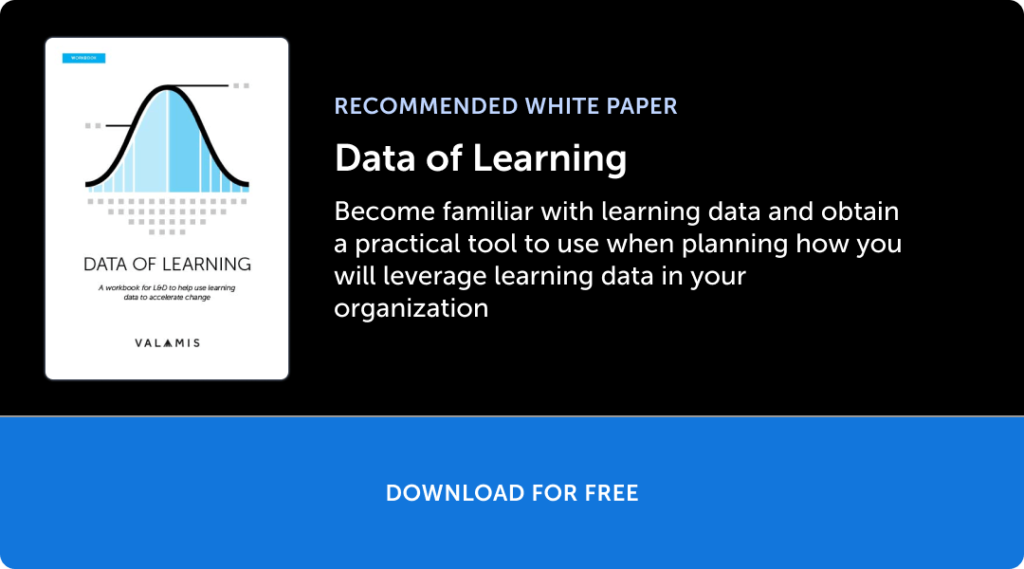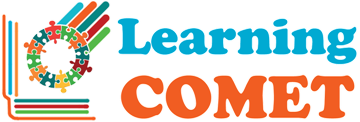In this article, you will learn about xAPI, the industry standard for measuring the effectiveness of online learning programs. Developed by the US Department of Defense-funded Advanced Distributed Learning (ADL), xAPI allows for the tracking, storing, and sharing of the learning experience across platforms and contexts. You will also discover the benefits of xAPI, such as better data capture and integration, improved talent management, and enhanced customer insights. Additionally, you will understand how xAPI works by generating statements stored in a Learning Record Store (LRS). Examples of xAPI in action, such as its use with virtual reality (VR) training programs, will also be mentioned.

Understanding the Industry Standard: xAPI for Measuring Online Learning Effectiveness
In today’s digital age, online learning has become increasingly popular and essential for individuals and organizations alike. The ability to track and measure the effectiveness of online learning programs is crucial for optimizing learning outcomes and achieving organizational goals. This is where the Experience API (xAPI) comes into play. xAPI is a standard that allows for the tracking, storing, and sharing of the learning experience across platforms and contexts. It is considered the industry standard for measuring the effectiveness of online learning programs.
History and development of xAPI
xAPI, also known as Tin Can API, was developed by the US Department of Defense-funded Advanced Distributed Learning (ADL) initiative in collaboration with Rustici Software and the SCORM community. It was initially created to overcome the limitations of the Sharable Content Object Reference Model (SCORM) and the Aviation Industry CBT (Computer-Based Training) Committee (AICC) specifications.
Benefits of using xAPI
One of the key benefits of using xAPI is its ability to track learning experiences in a wide range of scenarios and platforms, both online and offline. This means that learning can be tracked not only within a Learning Management System (LMS), but also during activities such as mobile learning, simulations, virtual reality (VR), and even in the physical world. This comprehensive tracking allows for a better understanding of user learning and enables organizations to gather data on the effectiveness of their learning programs.
Another benefit of using xAPI is its data capture, integration, and transfer capabilities. Unlike SCORM and AICC, which are limited to tracking learner progress within an LMS, xAPI can capture and store data from various learning activities and systems. This data can then be easily integrated with other systems, such as human resources or talent management platforms, for a more holistic view of the learner and their performance.
Furthermore, xAPI allows for the connection between learning and performance. By tracking not only the learning activities but also the performance outcomes, organizations can assess the impact of learning on job performance and organizational goals. This linkage between learning and performance enables organizations to identify areas for improvement and make data-driven decisions to optimize learning interventions.
Additionally, xAPI provides enhanced insights for talent management and development. By capturing data on individual learner activities and performance, organizations can identify high-performing individuals, skills gaps, and areas for improvement. This information can inform talent development strategies and help organizations focus their resources on the most critical learning needs.
How xAPI works
xAPI works by generating statements that capture and describe learning activities and experiences. These statements are then stored in a Learning Record Store (LRS), which serves as a centralized repository for all xAPI data. The LRS can be hosted locally or in the cloud and acts as a secure and structured platform for storing and accessing xAPI data.
When a learner engages in a learning activity, such as completing an online course module or participating in a simulation, xAPI statements are generated and sent to the LRS. These statements contain information about the learner, the learning activity, and any outcomes or achievements. The statements can also include context information, such as the device used, the location, and the time of the activity.
The LRS can then be accessed to retrieve and analyze the xAPI data. This data can be used to generate reports and visualizations, providing insights into learner progress, engagement, and performance. The data can also be used for advanced analytics, such as predictive modeling or personalized learning recommendations.
xAPI Features
Tracking and storing learning experiences
One of the key features of xAPI is its ability to track and store learning experiences in a wide range of scenarios and platforms. Whether it’s completing an online course, participating in a virtual reality (VR) training program, or even attending a physical workshop, xAPI can capture and record these learning experiences. This comprehensive tracking allows for a more holistic view of the learner’s journey and enables organizations to analyze and optimize their learning interventions.
Integration and data capture
xAPI enables the capture and storage of data from various learning activities and systems. Unlike SCORM and AICC, which are limited to tracking within an LMS, xAPI can capture data from a variety of sources, including mobile learning apps, simulations, gaming platforms, and even physical sensors. This data can then be integrated with other systems, such as talent management or human resources platforms, for a more comprehensive view of the learner and their performance.
Connecting learning and performance
One of the unique features of xAPI is its ability to connect learning activities with performance outcomes. By tracking both learning activities and job performance, organizations can assess the impact of learning on individual and organizational goals. This linkage enables organizations to identify areas for improvement, measure the effectiveness of learning interventions, and make data-driven decisions to optimize learning and performance outcomes.
Enhanced insights and talent management
xAPI provides organizations with enhanced insights into learner activities, performance, and talent management. By capturing and analyzing data on individual learner activities and achievements, organizations can gain valuable insights into learner engagement, skill gaps, and areas for improvement. This information can inform talent management strategies, identify high-potential individuals, and enable personalized learning interventions for maximum impact.

The Role of Learning Record Store (LRS)
Introduction to Learning Record Store (LRS)
A Learning Record Store (LRS) is a critical component of the xAPI ecosystem. It serves as a centralized repository for storing and accessing xAPI data. The LRS can be hosted locally or in the cloud, depending on organizational needs and preferences. The LRS can store and manage large volumes of xAPI data, providing organizations with the ability to easily retrieve and analyze learner information.
Storing and accessing xAPI data
The LRS is responsible for storing and managing xAPI data generated by various learning activities and systems. It securely stores the xAPI statements, which contain information about the learner, the learning activity, and any outcomes or achievements. The LRS can be accessed by authorized users to retrieve and analyze the xAPI data. This data can be used to generate reports, visualizations, and advanced analytics, enabling organizations to gain valuable insights into learner progress, engagement, and performance.
Data security and structured information exchange
Data security is a paramount concern when it comes to the storage and exchange of learner information. The LRS ensures the security of xAPI data by implementing robust data encryption and authentication measures. It also provides structured information exchange, allowing for the standardized transfer of xAPI data between different systems and platforms. This structured exchange ensures that xAPI data can be easily integrated with other systems, such as talent management or human resources platforms, for a more comprehensive view of the learner.
Analyzing Learning and Organizational Goals
Impact of learning on organizational goals
Understanding the impact of learning on organizational goals is crucial for optimizing learning interventions and driving business outcomes. xAPI enables organizations to measure the effectiveness of learning programs by linking them to performance outcomes. By analyzing learner data captured through xAPI, organizations can assess the impact of learning on individual and organizational performance. This analysis provides insights into areas for improvement, identifies high-performing individuals, and informs talent management strategies.
Analytics provided by xAPI
xAPI provides organizations with a range of analytics capabilities to analyze learner data and inform decision-making. These analytics can include tracking learner progress, engagement, completion rates, and performance outcomes. xAPI can also generate predictive analytics models to identify potential areas for improvement or personalize learning recommendations based on individual learner needs. The analytics provided by xAPI enable organizations to make data-driven decisions, optimize learning interventions, and measure the effectiveness of their online learning programs.
Improving learning assets with xAPI insights
xAPI enables organizations to improve their learning assets by providing insights into learner engagement and effectiveness. By analyzing xAPI data, organizations can identify areas where learners may struggle or require additional support. This information can be used to enhance learning assets, such as course content, instructional design, or assessments, to better meet the needs of learners. By continuously analyzing xAPI data and improving learning assets, organizations can drive better learning outcomes and improve the effectiveness of their online learning programs.

xAPI in Action
Use of xAPI in virtual reality (VR) training programs
One of the most exciting applications of xAPI is its use in virtual reality (VR) training programs. VR provides a highly immersive learning environment, allowing learners to practice skills and scenarios in a realistic and controlled setting. By combining xAPI with VR, organizations can track and measure learner activities and performance in these training programs. xAPI can capture data on learner interactions, simulations completed, and performance outcomes in the VR environment. This data can then be analyzed to assess the effectiveness of the VR training program and identify areas for improvement.
Cost-efficiency and effectiveness of xAPI in training
xAPI offers organizations significant cost-efficiency and effectiveness benefits when it comes to training programs. Traditional training methods, such as face-to-face workshops or classroom sessions, can be expensive and time-consuming to deliver. With xAPI, organizations can leverage online learning platforms, virtual classrooms, and self-paced eLearning modules to deliver training more cost-effectively and reach a larger audience. xAPI also enables organizations to measure the effectiveness of these training programs by capturing data on learner activities and outcomes, allowing for continuous improvement and optimization.
Comparing xAPI with SCORM and AICC
Overview of SCORM specification
SCORM (Sharable Content Object Reference Model) is a widely used specification for eLearning content interoperability. It defines how online learning content and LMSs should communicate and track learner progress. SCORM is based on a set of standards and specifications that allow for the interoperability of content and systems. However, SCORM has limitations when it comes to tracking learning activities outside of an LMS and integrating with other systems.
Overview of AICC specification
AICC (Aviation Industry CBT Committee) is another specification for eLearning content interoperability. It was initially developed for the aviation industry but has been widely adopted in other industries as well. AICC defines how online learning content and LMSs should communicate and track learner progress. However, similar to SCORM, AICC has limitations when it comes to tracking learning activities outside of an LMS and integrating with other systems.
Differences between xAPI, SCORM, and AICC
xAPI differs from SCORM and AICC in several ways. Firstly, xAPI allows for the tracking of learning activities across platforms and contexts, both online and offline. This means that learning can be tracked not only within an LMS but also during activities such as mobile learning, simulations, or even physical workshops. SCORM and AICC are limited to tracking within an LMS.
Secondly, xAPI enables the integration and capture of data from various learning activities and systems. It can capture data from a wide range of sources, including mobile learning apps, gaming platforms, or physical sensors. SCORM and AICC are limited to capturing data within their respective specifications.
Thirdly, xAPI allows for the connection between learning activities and performance outcomes. By tracking both learning activities and job performance, xAPI enables organizations to measure the impact of learning on individual and organizational goals. SCORM and AICC focus primarily on tracking learner progress within an LMS and do not provide this linkage between learning and performance.
In conclusion, xAPI offers organizations a comprehensive and flexible solution for tracking, storing, and measuring online learning effectiveness. Its ability to track learning experiences across platforms and contexts, integrate with various systems, connect learning and performance, and provide enhanced insights makes it the industry standard for measuring online learning effectiveness. As organizations strive to optimize their learning interventions and achieve their organizational goals, xAPI provides the necessary tools and capabilities to drive continuous improvement and success in the digital learning landscape.





